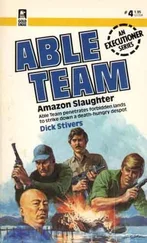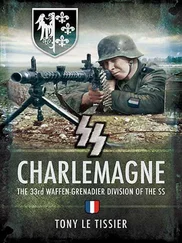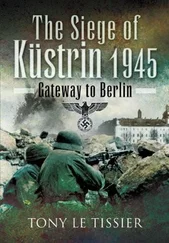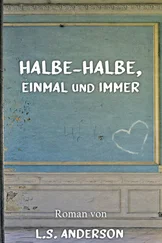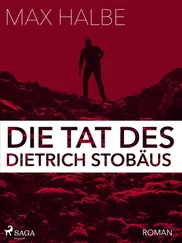We, the soldiers on the tanks and those behind them, found, as so often during the war, that in situations like this one’s ability to think becomes blocked and trained reflexes take over. It was only much later that we became fully conscious of what a suicide mission we had been committed to as cannon fodder, and what enormous luck we had in coming out of this inferno alive. I still marvel that I came through Halbe hit by neither a bullet nor a splinter and only got some splashes of phosphorous on my steel helmet and tent-half.
Although during the war I had very often, as an infantryman, been bombarded with weapons of all kinds, especially on the Eastern Front in Russia, I had never experienced such concentrated fire on such a small area and on so many people.
Meanwhile the tanks had turned round and we sat on them with the remainder of the comrades of our platoon. Only eight men of our platoon were still alive, the others having been either killed or wounded. [27] Lindner in the author’s Death Was Our Companion .
SS-Lieutenant Klust of 502nd SS Heavy Panzer Battalion was in his Tiger a few hundred metres behind the lead tanks:
We drove into Halbe between 2000 and 2100 hours. The village was a confused mass of vehicles, soldiers and civilians, and Russian shells were exploding literally on people’s bodies. We could not possibly get through this in our tank. In this chaos, SS-Major Hartrampf came up to me and said: ‘Klust, the lead troop is stuck fast. We have to get round Halbe to the left. Take over the lead and drive on. This way we will get some space and get on.’
I gave my driver, Bert Fink, the new direction and we drove about 400 metres out of Halbe to the south and then turned back west again. We came under heavy anti-tank gunfire from a patch of woods some hundred metres off and were hit without too much damage. My gunner, Ferdinand Lasser, a typical imperturbable Bavarian, fired even before I had completed the order. We could no longer aim precisely, as it was already quite dark, but Lasser silenced the anti-tank guns with five shots. Then we drove on again, and when we reached the woods we wheeled left for the Massow forest warden’s lodge. [28] Tieke, Das Ende zwischen Oder und Elbe , p. 320.
Rudi Lindner, with the escorting infantry, continued his account:
We were glad as our armoured column moved back slowly, taking us away from this frightful bit of street. From the railway station we then went south a little and then later drove westward through the woods once more.
During the manoeuvring of these Tigers of the leading platoon, and the change of direction of the southern spearhead to a new breakthrough sector in the woods south of Halbe, even more soldiers and civilians pressed into 9th Army’s break-out point at Halbe.
Before turning west we made a short halt to unload the wounded and redistribute the officer cadets among the tanks. The officer cadets from the two shot-up tanks were assigned to a reconnaissance APC equipped with a machine gun, which now took over the lead. We had to reconnoitre towards the autobahn. I sat in the rear of the APC and had to cover the rear through the open door. As I was unable to see properly from there, I stupidly sat on the APC’s rear towing hook, an error I was soon to regret. After having gone about 100 metres, we were shot at from in front and our machine gun and sub-machine gunners opened fire. I had not reckoned on the driver suddenly reversing at full speed. I slipped off the towing hook and fell on the road, turning in such a way that I lay in the direction of travel and on my stomach, pressing myself close to the ground. The tracks of the APC rattled past right and left of my body. Fortunately the APC had sufficient ground clearance. Once the vehicle had gone over and past me, the driver noticed and stopped the APC. Covered by fire from our machine guns, I rolled aside and ran back uninjured to the rear of the APC. Once more I had been lucky and also didn’t have to worry about being laughed at by my comrades. Although there was nothing for me to laugh about, it could have been far worse, and I had to put a good face on it.
With all our weapons firing, the APC pulled back to the armoured column, where the tanks had meanwhile turned their turrets to two o’clock and opened concentrated fire on an assembly of T-34s and other vehicles. Soon several T-34s were alight, making good targets of the others, which therefore withdrew.
Our Tigers received the order to resume the advance towards the autobahn and the officer cadets in the APC were reallocated to the tanks. I was assigned to the tank commanded by Harlander with four other comrades. We climbed aboard and the armoured column set off once more. After a few hundred metres we came under fire again and our tank was hit in the tracks, but kept on firing.
We had driven into a concentration of Russian troops, but under the covering fire of our Tiger’s crew, the armoured column was able to fight its way through towards the autobahn, and with them also went the rest of the officer cadets of our platoon. I heard nothing more of these comrades, either in the days to follow or later on.
Now it became uncomfortable for us on our immobilized tank. We came under heavy fire from Panzerfausts, which fortunately were all fired too high and exploded above us in the trees, showering us with splinters and branches. From the illumination of a flare we saw that we were in the assembly area of some heavy Stalin tanks, and one of these colossi was already turning its turret in our direction as the light went out. A lightning bang, a frightful howling and then a crash shook our tank, which had received a direct hit. The crew bailed out, shouting: ‘Harland is dead!’
We also jumped off and ran instinctively in the direction of the least noise of combat to the next woodland track, where we dug in. This was the time to keep our nerve. We were completely on our own, our tanks had gone over the hill, there were Russian troops in the woods, where exactly no one knew, and our tank crew had run off in another direction.
The most important questions for us were to establish whether the track was free of the enemy and whether it led to the autobahn. I therefore went along the track in a westerly direction to find out. The track was free of the enemy for about 1,000 metres and led, as we luckily later discovered, to the autobahn.
I was glad to get back to my comrades and to get a little sleep before we marched on again. [29] Lindner in the author’s Death Was Our Companion .
Now leading the break-out by 502nd SS Heavy Panzer Battalion, SS-Lieutenant Klust continued:
We drove westwards along a forest track. Many soldiers were marching around our tank, or trying to climb aboard. Some were riding on top and even blocked the air intake for the engine, causing it to overheat. My order to get off the tank and give us some close security was only partially successful.
After another few hundred metres, I had us stop. Orientation was nil. I only had a completely inadequate map showing neither woodland tracks nor precise landmarks. Several vehicles, including a Tiger, closed up behind.
After a brief consultation, we drove on and suddenly found ourselves on top of a Russian bivouac with the odd small campfire. Apparently a Russian supply convoy had bedded down here for the night. Both sides were taken by surprise. We had to get on. Just as I was setting off, a lieutenant-colonel wearing a leather coat jumped on my tank and shouted that we were heading in the wrong direction, but I replied that I was in charge and closed the hatch on him.
We drove on with firing going on all over the woods, friend and foe being indistinguishable in the dark. After another few hundred metres, I stopped again for the others to catch up. [30] Tieke, Das Ende zwischen Oder und Elbe , p. 320.
Читать дальше

